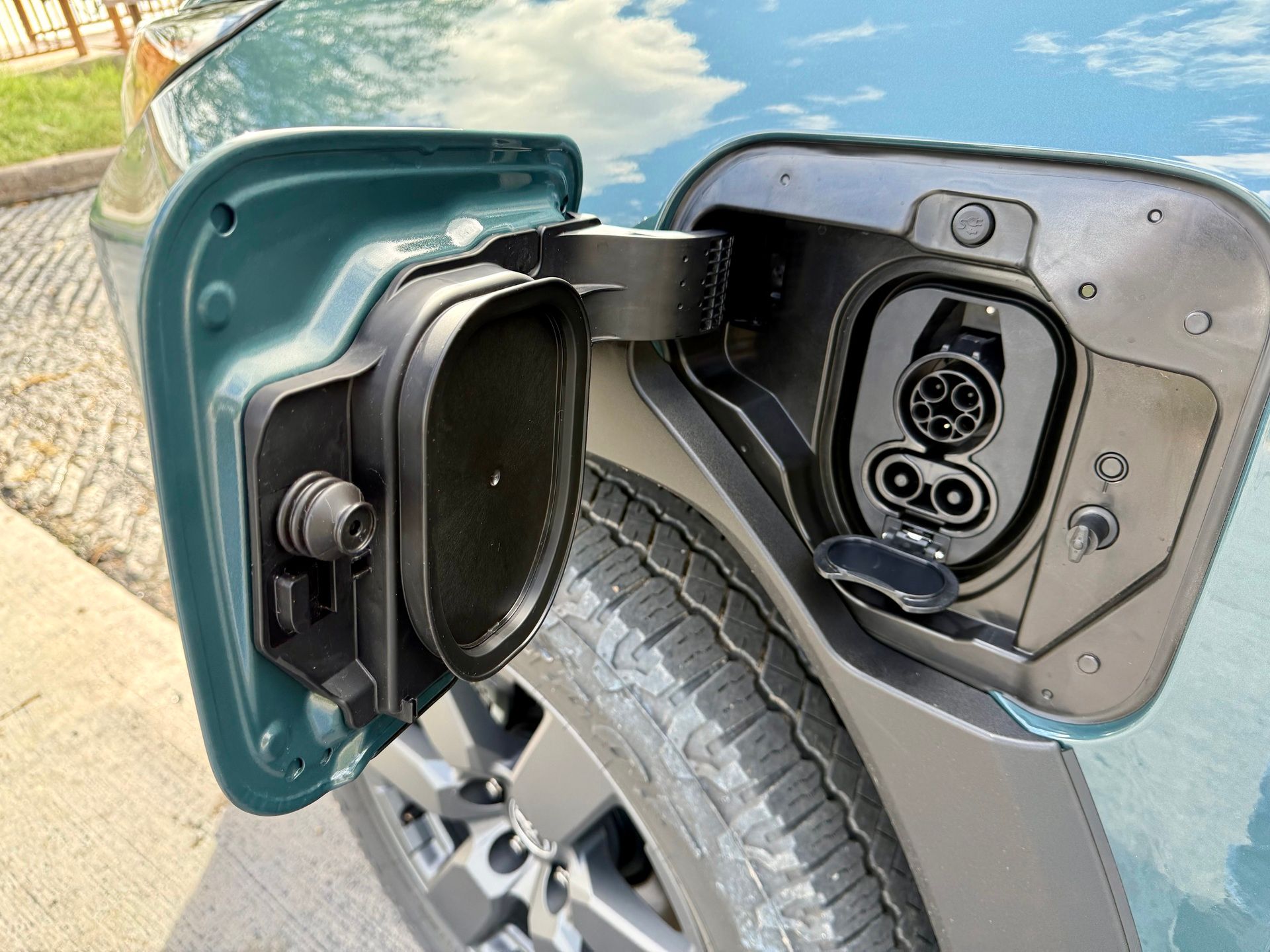Toyota provided flights from Detroit to Phoenix and accomodations so The Kirchner Report could drive the RAV4. The Kirchner Report does not accept paid editorial.
Last week, I spent some time in the new 2026 Toyota RAV4. I’ll cover the vehicle itself in more detail in the very near future. There is one feature that I would like to talk about here.
That feature? DC fast charging on a plug-in hybrid.
In the United States, there are a couple of plug-in hybrids that have the ability to fast charge on a DC connection. The Mitsubishi Outlander PHEV comes to mind, mostly because it uses a CHAdeMO connector that is big in Japan, but virtually non-existent in the States.
There’s a Range Rover that supports a CCS connection in the States, and maybe like one other PHEV. The point is, there aren’t many out there.
On the surface, you might be wondering why. If you had a plug-in hybrid, there might be a situation where you’d want to recharge it more quickly than just plugging it at home or a level 2 on the road, right?
If you dig deeper, though, fast charging a PHEV in the United States doesn’t make a ton of sense.
The new Toyota RAV4 PHEV has a manufacturer’s estimated driving range of 52 miles on electricity alone. While that is certainly a lot of miles — plenty enough for the daily commute — it’s not exactly a quality road trip’s worth of miles.
In the United States, if you’ve ever driven on our highway system, you’ll notice a trend that bigger cities tend to be about 100 miles apart. Cleveland to Columbus? 100 miles. Columbus to Cincinnati? 100 miles. Cincinnati to Lexington? About 100 miles.
Even on a modest road trip, you’re using the gasoline engine. The range isn’t there on a PHEV to go long distances on electric-only driving. Do you want to stop every 40 miles or so to recharge? I know I don’t, and I’m someone who believes that we’ll have an electric car future.
If you happen to be on a trip and you stop to use the facilities, you might see an open DCFC available for you to plug in. An opportunistic fast charge could save you some bucks on the overall drive because you’re adding to the electric-only range of the car.
That would only be true if you were fast charging for free or barely little money. A DCFC I frequently visit charges, at times, $0.65 per kWh of electricity dispersed. That’s highway robbery, but many stations charge over $0.50 per kWh.
Assuming that latter price, and adding 20 kWh to your PHEV, would cost you $10.00. That’s a bit more than you’d put in the outgoing RAV, but let’s say that $10.00 would get you 50 miles of range. At the EPA-rated 38 MPG running as a traditional hybrid (with the PHEV battery depleted), on the previous version, and the national average of $3.036 per gallon, you’d only pay $3.99 to drive those 50 miles in hybrid mode.
While I don’t have specifics on how much more expensive it is to add DC fast charging to a plug-in hybrid, I do know it has to cost something. Additionally, Toyota is only including DC fast charging on certain PHEV variants, and most notably not the GR Sport. If it were a free value add, then it’d be on all variants.
So what gives?
Fact-based news without bias awaits. Make 1440 your choice today.
Overwhelmed by biased news? Cut through the clutter and get straight facts with your daily 1440 digest. From politics to sports, join millions who start their day informed.
I sat down with Yoshinori Futonagane, Chief Engineer of the RAV4, to ask about DC fast charging and its uses. Futonagane-san, through a translator, explained some of the reasons why DC fast charging might be useful.
“Some people will like to experience the full power of the vehicle,” he said.
With plug-in hybrids, you need to have some battery charge to get the maximum output of the vehicle (just like the more charge your EV has, the better performance it’ll have). While certainly I can see some people interested in that, I’m not sure it overcomes the drawbacks that come with finding a DC charger and plugging in.
During our chat, we also discussed that globally, it might make more sense. In Europe, for example, where there are cities you can’t drive into on gasoline power, a DC connector might make sense. Futonagane reminded me that the RAV4 is sold in some 180 countries.
That’s where I think it’ll see some use, in Europe. If you drive into a city center for a meeting, you might use up most of your electric-only range. If your meeting only lasts an hour, for example, you might not be there long enough to add enough range on level 2 to make it back out of the city. So a DC charge makes sense.
The Kirchner Report is 100% independent automotive journalism. If you want to support our coverage, subscribe for free, become a paid member, or leave a tip.
In the United States, which no longer has any federal tax incentive for buying a vehicle with a plug, and no longer has an EPA at all interested in regulating negative impacts on the environment, we’re unlikely to see those European-type restrictions any time soon.
I’m not saying nobody in North America will use the DC fast charging connection, as I’m sure I will when I get a week-long test of the car and want to test its performance, but I expect the utilization rate to be extremely low.
So don’t focus so much on that when you’re looking at the new RAV4, but rather on how you drive. If you do a lot of in-town driving and can charge at home or at work, swinging for the PHEV is the right choice for you.
If not, then the new hybrid is also new for 2026 and a significantly better performer than the outgoing hybrid model. I didn’t care much for the outgoing hybrid, or the Mazda that shares the same hardware, but the new one is something I could put on my recommended list.


